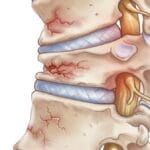Overcoming jumper’s knee takes patience
Workout after workout, you’re grinding toward your goals. Take it easy? Heck, no! So you push and push and push some more.
Then, one day, you feel a little twinge of pain just below your kneecap. It’s tender the next day, too… and even worse the day after that. Pretty soon, that knee barks just going up a flight of stairs.
Welcome to the patellar tendonitis club, a group nobody wants to join.
It’s time to tap the brakes a little bit on your routine. Overdoing it led to this injury, so you’re not going to overpower it into submission. Getting back to 100% requires a smart — and deliberate — approach.
Let’s walk through the process with physical therapist Mike Harrington, PT, DPT.
What is patellar tendonitis?
Let’s start with a little anatomy lesson. The patellar tendon is a tough-yet-flexible band of tissue that connects the bottom of your kneecap to the top of your shinbone. It transmits the force from the quadriceps muscles to straighten your knees.
Without this 1.75-inch-long tendon, it would be really tough to walk, run or jump.
As you might imagine, the patellar tendon occupies a high-stress spot in your body… and it can take a toll. Asking too much of the tendon can lead to the aches, pains and irritation that define tendonitis (also spelled tendinitis).
What causes the injury?
Prolonged overuse and sudden changes in activity level are the primary causes of patellar tendonitis. The injury is also known as jumper’s knee given how common it is for those competing in sports that require serious hops. (Basketball and volleyball, for instance.)
That being said, the ailment doesn’t just target athletes who push it to the limits. Repetitive knee stress from on-the-job duties could cause the issue, too. Ditto for those carrying a few extra pounds.
That’s why addressing patellar tendonitis always starts the same way: The first step is finding the reason why the pain started. Then you can start working to correct it.
Can you exercise with patellar tendonitis?
Before you can answer this question, you need to answer another: How bad is your case of patellar tendonitis? What you can do depends on how much you irritated the tendon.
If you catch the tendonitis early, “relative rest” paired with other treatment — such as icing, using a patellar tendon strap and taking over-the-counter anti-inflammatory medications — may quiet symptoms.
So if you’re a runner, walk for a few days to see if the pain goes away. Then slowly ease back into your regular training. Start at about 50% and increase by 10% each following week if all goes well.
But in worst-case scenarios, when you’re feeling consistent pain or weakness in the joint tendon while just going through your day, plan to halt any knee-stressing workouts for a few weeks. This would involve activities that include running and jumping.
A good rule of thumb? If you’re having trouble going up or down stairs, you need to significantly modify your workouts,.
In any case, a return to exercise should be gradual to avoid re-aggravating the injury.
Stretches to help patellar tendonitis
The goal is to develop load tolerance to handle the demands on the knee, what is typically thought of as building strength around the joint. It’s also helpful to work on flexibility.
This gives the tendon a break and resolves issues that can cause increased or abnormal strain on the tendon.
Tight muscles in your hamstrings, hips or calves can contribute to a flare-up of patellar tendonitis by putting added stress on your knee. Stretches and exercises that target your lower body can prevent or ease the problem.
Suggested stretches and exercises include:
Hamstring stretch
What this helps: The stretch can increase flexibility and loosen up your hamstrings and hips, allowing better range of motion in your knee and pelvis.
- While sitting on a chair, extend one leg out. Keep your knee straight and rest your heel on the floor.
- Lean forward slowly until you feel a stretch in the back of your leg. Bend through your hips. Keep your back straight.
- Hold for 30 seconds. Switch legs and repeat. Do three sets.
Calf stretch
What this helps: The stretch addresses tightness in the calf, which can lead to knee and foot pain.
- Start in a standing position facing a wall or post. Put your hands on the wall and step forward with one foot. (Both feet should be pointing straight forward.)
- Lean forward to the wall, bending your forward leg at the knee and keeping your back leg straight. You should feel the stretch in the calf of the leg behind you. Adjusting the angle of your lean will make the stretch more or less intense.
- Hold for 30 seconds. Switch legs and repeat. Do three sets.
Kneeling hip flexor stretch
What this helps: The stretch targets muscles across your hip and knee joints.
- Kneel on one knee, with your other leg in front of you at a 90-degree angle.
- Lean forward, bending your front knee slightly until a stretch is felt from the hip to the knee on the knee-down leg.
- Hold for 30 seconds. Switch legs and repeat. Do two sets.
Straight leg raise
What this helps: The exercise strengthens your abdominal muscles and the upper thigh.
- Lie on your back with one leg stretched out and the other bent at the knee with the foot flat on the floor.
- Raise the extended leg, keeping your knee straight. Hold briefly and then return the leg to the floor. Repeat 15 times.
- Switch legs and repeat. Do three sets.
Squat/Wall slides
What this helps: This exercise builds strength in your thighs.
- Lean with your back against a wall and your feet positioned away from the base of the wall. Slowly slide down the wall with your back, dropping your butt until your legs are at a 90-degree angle with the floor or at a depth that doesn’t irritate your tendon.
- Hold for 30 seconds and then rise. Repeat three times.
Step up
What this helps: This simple body-resistance exercise strengthens your glutes and leg muscles to better support knee operation.
- Stand in front of a step or stool. Step up onto the higher surface with one leg and then the other. Step back in the same one-two pattern and return to starting position.
- Alternate the leading leg and repeat 15 times. Do three sets.
What is the recovery time from patellar tendonitis?
The timeline varies from person to person, but Harrington cautions that the process can take longer than most expect. You can’t rush it,s. The key is to be consistent, patient and willing to modify activities.
Pushing too hard, too fast can lead to a setback. If you do an activity and feel knee pain afterward, it’s a sign to dial down the intensity level of your workout.
It’s easy to get frustrated, but slow and steady is the idea here.





